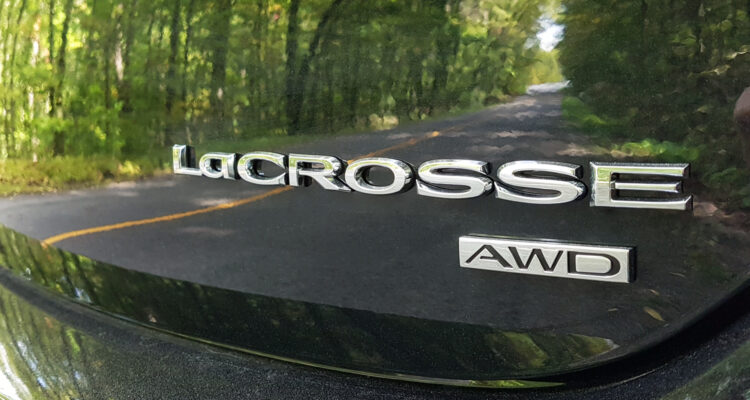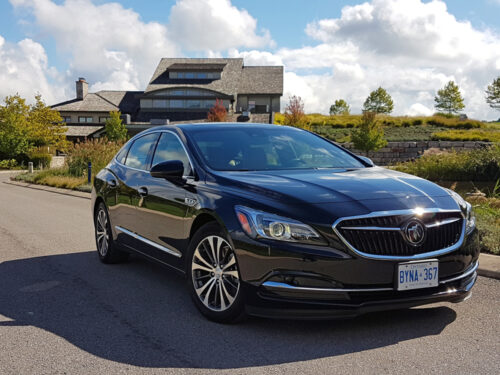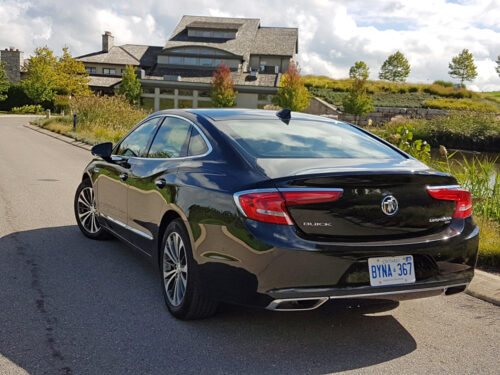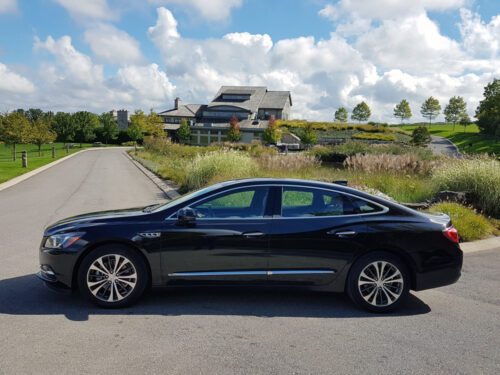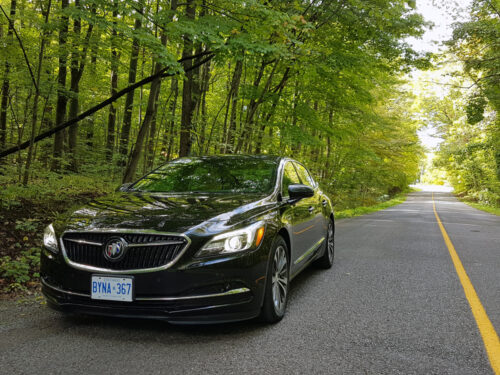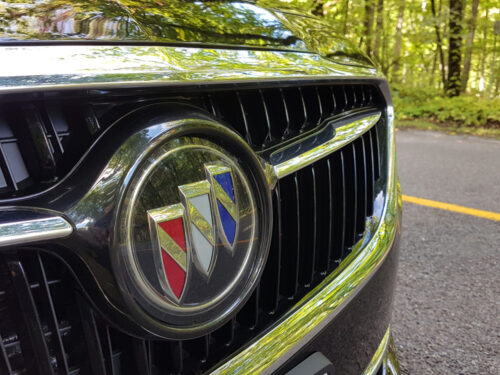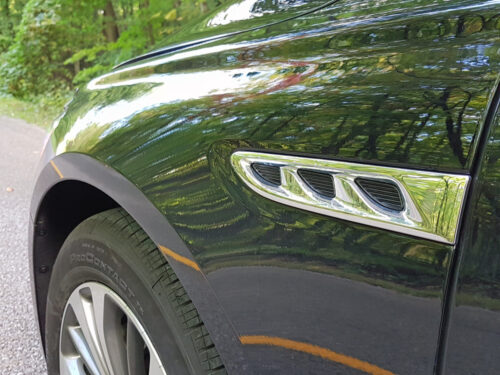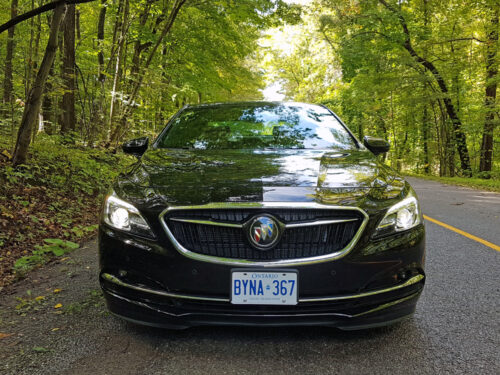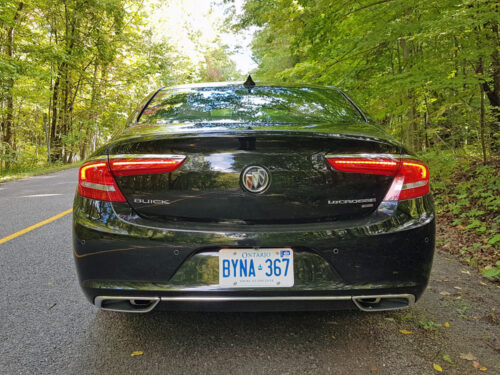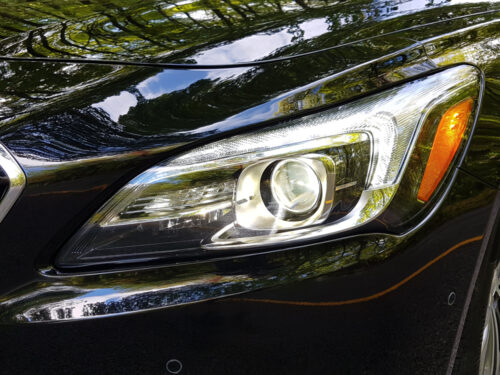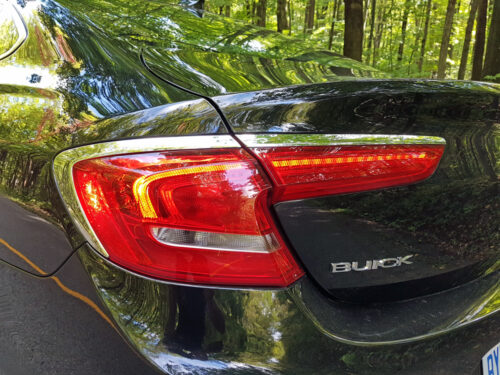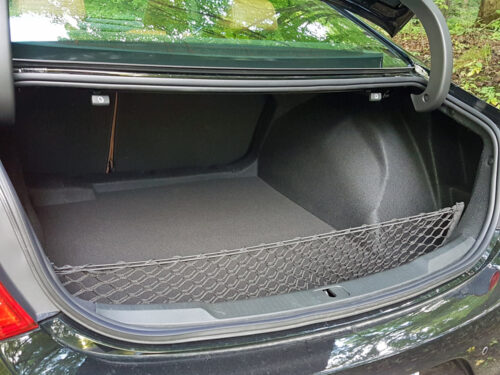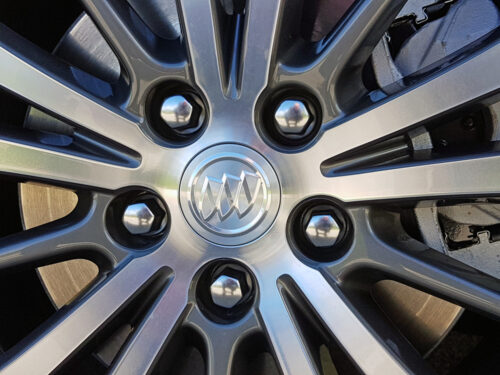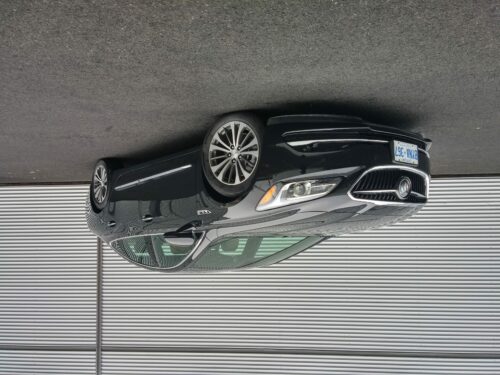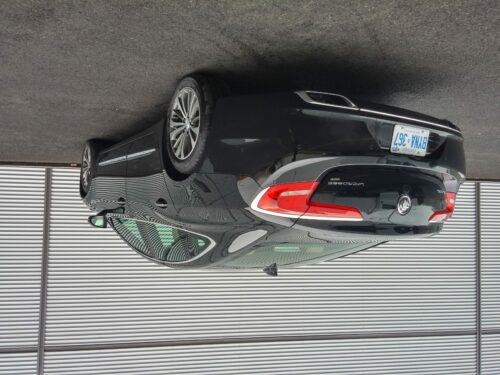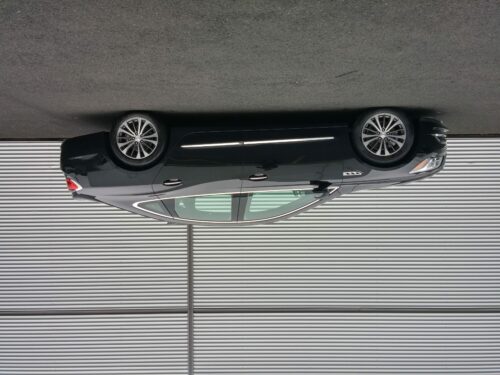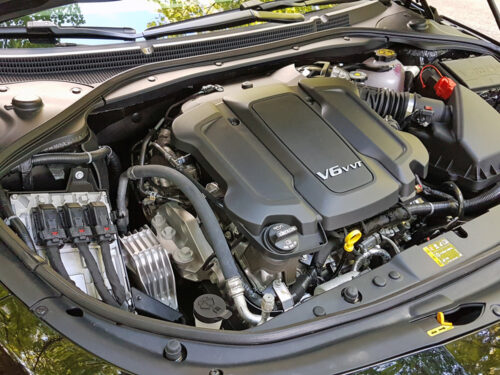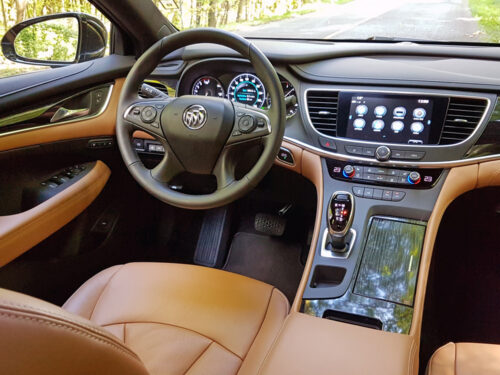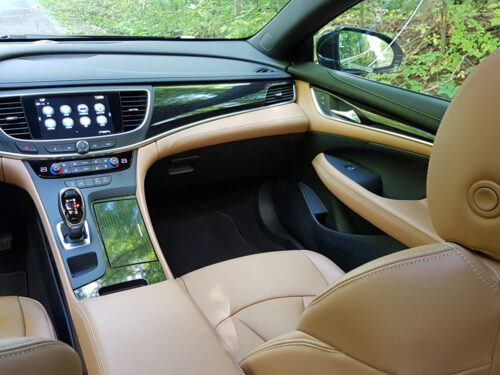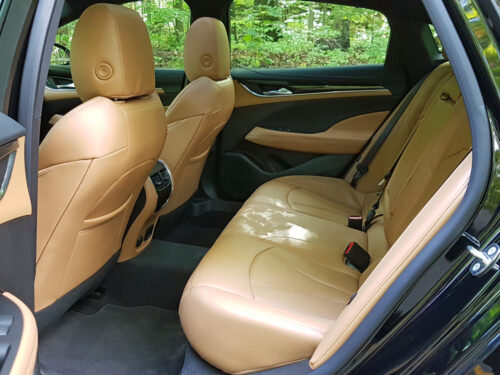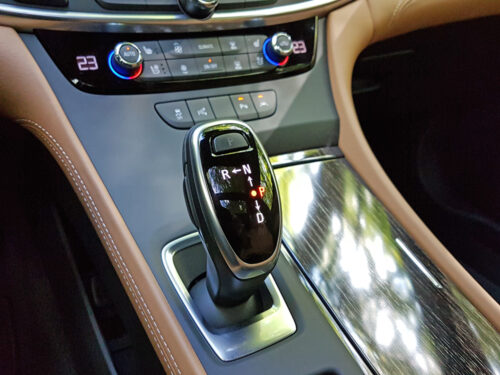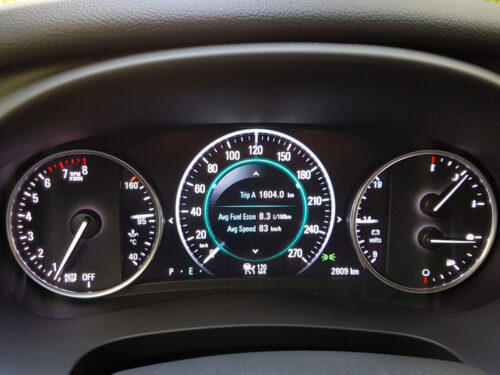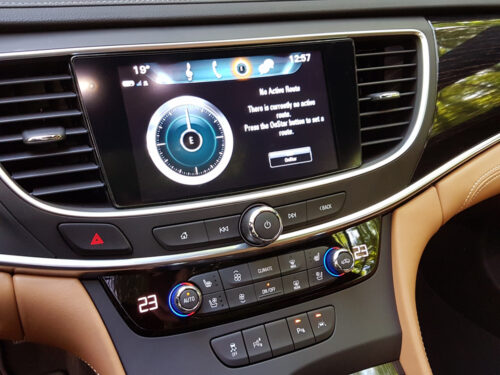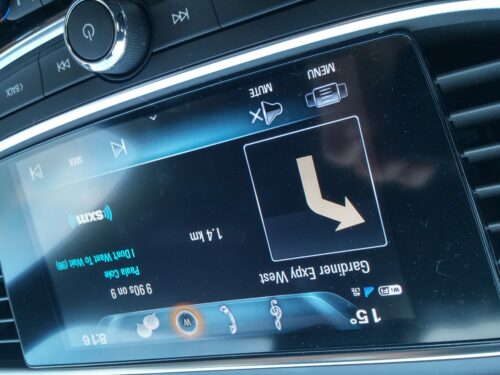My grandpa drives a Buick. We’ve all heard it before, if not from Buick’s most recent series of ads, from people in general. For the longest time, the brand featured an “image”, with boat-sized, luxurious and typically beige models associated with a more mature audience. This pushed the automaker to want to shed these pre-conceived ideas by doing something fresher which, they are hoping, will appeal to a younger audience. With several of the models they have done a good job, namely the Trax-twin-Encore and the rejuvenated Verano. The Avista concept also looks promising. I recently took the wheel of the brand’s flagship sedan, the all-new 2017 Buick LaCrosse, and was impressed with the new design. This third generation is meant to be the botoxed, younger-looking version since the model’s introduction about a decade ago.
The LaCrosse looks elegant, sophisticated and lavish; the lines are chiselled, drawing some inspiration from the striking Avenir concept. Who can blame them when such a majestic design is at hand. And in gaining some muscle, the new LaCrosse also sheds a few hundred pounds in the process.
The interior, however, has not completely cut ties with the past. The beige-and-black leather with wood accents look, well, not as modern as the outside. There’s a bit of a disconnection here. Other automakers have designed a two-tone interior and managed to make it look fresh and young. That being said, on my 1,000-km trip to and from Montreal to attend a family event, the LaCrosse was flawless. It is comfortable, with a tamed and approachable on-road behavior and a quiet cabin — thank you active noise cancellation!
The adaptive cruise control is efficient and where some systems can be sluggish, the LaCrosse is on point and responsive; good qualities to have when navigating Highway 401 for long hours. The available 4G LTE network also allowed me to step out of the realm of satellite radio and in-phone music to venture into the world of live music streaming, another perk for a six-hour trip. Then, of course, you get the much appreciated accessories such as rear cross traffic alert, heated and ventilated seats, heated steering wheel, keyless entry, rear parking assist and more. The gear selector I find to be slightly annoying as it doesn’t shift into position like most automatic transmissions, rather you only need to flick it. But there’s a small delay in going from one gear to the next that makes you wonder what is the purpose of a quick-flick gear stick?
While driving on the highway it suddenly hit me; where the heck is the navigation system? I always like to enter my destination into the system to get a sense of the distance remaining and of my ETA, a time I always end up trying to beat. And I like to figure my way around on a computer, but this time, I had to accept a bizarre reality: there is no proper navigation system. The only navigation available is the OnStar Guidance service, where I would have had to call the operator and ask for directions to my address. The turn-by-turn indications would then be sent to the vehicle’s computer and displayed on the touchscreen display. Bottom line, I either had to ask for directions and follow them or make do without a map altogether and instead check my status at every pit stop. I chose option number two: I knew where I was going, I was just curious to see when I would get there.
Digging into the navigation situation a little deeper, the other available option is to connect a smartphone using Apple CarPlay or Android Auto. Using this method, the cellphone becomes an extension of the onboard computer. In either case, you have to pay for cell phone data, for the 4G LTE wifi package, or for the OnStar guidance service.
Now technically speaking, there is a standard navigation system available, but that’s only if you opt for the top-of-the-line Essence of Premium trim levels. Then add another $1,450 to get a standard navigation system you see in most cars, especially those with a higher trim level. To me this doesn’t make a whole lot of sense. When you consider all the effort Buick has put into turning the brand into something appealing to a younger audience, it defies common sense that in order to have navigation as standard equipment, the price starts at around $45,000.
Under the chiselled hood is a 3.6L DOHC V6 engine rated at 310 horsepower and 282 lb-ft of torque, teamed with an eight-speed automatic transmission and a dual-clutch all-wheel drive system. The entry-level LaCrosse is available in a front-wheel drive layout as standard equipment. Though it remains a slightly asepticized, luxury driving experience, the V6 does a fine job and is a lot more responsive than you would expect. As I wrote earlier, the car’s handling is exemplary, predictable and well-behaved.
A 10.0L/100km average is advertised and on that note, the LaCrosse does at lot better than expected with an observed average of 8.2L. Considering the powertrain at hand, this is an excellent number.
My experience with the 2017 Buick LaCrosse has been bitter-sweet. It is a fine full-size sedan all around with comfortable seating for five and luxury to boot. But I did find a few flaws that would detract me from considering it as a top choice in this class. The new design looks great, but will the LaCrosse manage to step out of the early-bird special line-up and join the cool-cougars club? That is yet to be determined.
2017 Buick LaCrosse Premium AWD
Price as tested: $53,640
Freight: $1,650
Configuration: front engine/all-wheel drive
Engine/transmission: 3.6-litre V6 / 8-speed automatic
Power/torque: 310 horsepower/ 282 lb-ft
Fuel (capacity): Regular (70 L)
Combined fuel economy ratings (L/100 km): 10.4L/100 km
Observed fuel economy (L/100 km): 11.3L/100 km
Warranties: 4-years/80,000 km (basic)
Competitors: Lincoln MKZ, Infiniti Q50, Lexus IS
Related links:



